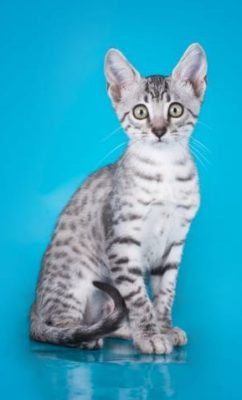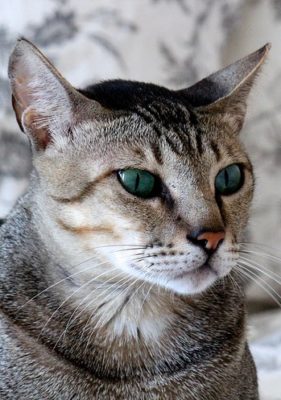Arabian Mau
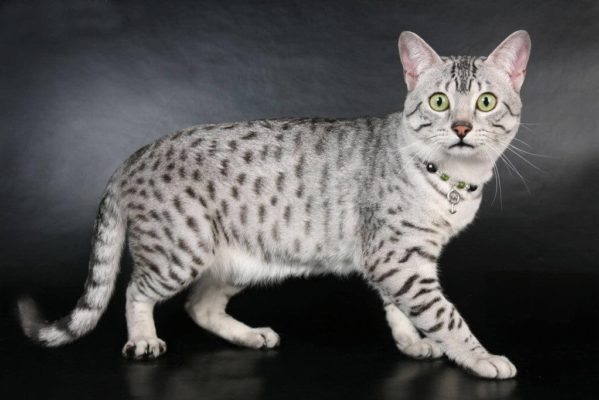
The main characteristic of the Arabian Mau is the need for personal space. It is inherent in them since ancient times when they did without human attention. Fortunately, the freedom-loving nature of the breed is well combined with tenderness for its owner. They have learned to be friends with humans and imbued with love and sensitivity to them.
Table of Contents
Breed Information
| Origin | United Arab Emirates (UAE) |
| Size | Males up to 40 cm Females 27-30 cm |
| Weight | Males 6-10 kg Females 4-8 kg |
| Fur Type | Short-haired |
| Color | White, black, white-red, gray and white tabby (mackerel or spotted) |
| Lifestyle | Outdoors, indoors |
| Lifespan | 14-16 years |
| FIFe Classification | – |
| WCF Classification | Group 3: “Short-haired”. Breed designation – ARM (temporarily recognized breed) |
| TICA Classification | – |
| Group | Short-haired cats |
| Price | $600-800 |
Breed Photos
Origin History
The history of the Arabian Mau breed begins about 1,000 years ago. Desert steppe cats are considered the direct ancestors of the breed. Since the 10th century, they have lived on the territory of the Arabian Peninsula. Cats were very independent and autonomous, and in general, they did not complain much about people.
The breed got its name precisely because of its habitat. For many years of living in the desert, they learned to survive without human help. Unfortunately, it is not known who was able to “tame” the wild Arabian Mau.
Arabian Mau breeders paid attention to cats only at the end of the XX century. Breeding work and careful selection helped improve the breed’s best qualities and get an ideal representative. Petra Muller, the head of one of the felinology clubs in the UAE, has played a vital role in the breed’s propagation. Under her guidance, the selection was carried out, and the first standard of the breed was sent for consideration.
Only in 2008, the WCF organization officially recognized the Arabian Mau. The breed is still not recognized by other associations. The Arabian Mau is popular in its homeland but not outside of it. Officially, the breed is bred only by one cattery in Dubai.
Appearance
The Arabian Mau gives the impression of a solid and stout cat. The body is muscular and slightly elongated. The head is rounded, and the profile is curved. The cheekbones are well emphasized. The eyes are small, oval, and set wide open. The color of the eyes usually varies according to the color of the coat.
The ears are small but elongated and pointed. The ears are moderately spread out and slightly slanted to opposite sides of each other. Limbs with pronounced muscles, long. The tail is of medium length, quite flexible, and tapered toward the end.
The hair of the Arabian Mau is short and silky. There is no undercoat. The palette of colors of Arabian Mau fur is very diverse. Permissible combinations are as follows:
- white-red and red tabby (tabby patterns: mackerel, spotted);
- red with any amount of white (van, harlequin, bicolor, with white spots);
- black with any amount of white;
- silver tabby;
- black solid;
- white solid (perfect snow-white, no shading or pattern).
In all tabby colors, the tabby pattern is spread throughout the body. The most traditional and common is the white-red coloration.
Character
The main characteristic of the Arabian Mau is the need for personal space. It is inherent in them since ancient times when they did without human attention. Fortunately, the freedom-loving nature of the breed is well combined with tenderness for its owner. They have learned to be friends with humans and imbued with love and sensitivity to them.
The Arabian Mau is quite active and playful, which means that the relationship with children will be high. Speaking of height, Arabian Mau can jump quite high. To jump on a high cupboard, door, or roof is not difficult for him. Regarding other animals, the Arabian Mau is rather indifferent than friendly. He is possessive, so he may behave jealousy to anyone who wants to get his master’s attention or a part of his territory.
Because of its past, where the Arabian Mau had to survive in the desert, it tolerates the heat well. Also, the Arabian Mau does not mind walking outside. Very often, owners successfully train the breed to walk on a leash.
Care
The Arabian Mau’s short hair and lack of undercoat keep grooming to a minimum. It is enough to comb out a pet twice a month. You should bathe your pet based on how dirty it is. Infrequent water procedures are recommended; once every few months will suffice. Inspect and clean ears and eyes several times a week. Nails should preferably be trimmed weekly.
Education
Although the Arabian Mau is independent, it is sympathetic to its owner’s requests. Upbringing and socialization of the pet are better to start as early as possible – from about four months of a kitten life. The owners, who have Arabian Mau in their own homes, noted his love for the hunt. He’s good at protecting your home from the intrusive attacks of rodents – it’s in the blood of the Arabian Mau.
Common Diseases
Researchers of the Arabian Mau breed did not identify any serious genetic diseases. Representatives of the breed are hardy, have strong immunity and health. However, this does not mean that you should completely forget about visits to the veterinarian. Do regular annual checkups and vaccinations at the vet. Also, be sure to protect your pet from parasites, especially if he has constant access to the outdoors.
Nutrition
Arabian Mau are used to getting their food and will not refuse a tidbit from the owner’s plate. Try to provide a balanced and regular diet. Include protein and vitamin supplements. If you prefer ready-made food, the Arabian Mau is fine with premium dry cat food for medium-sized breeds.
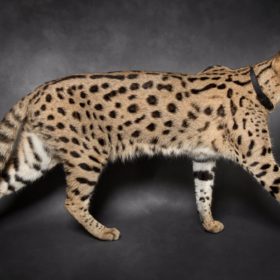 Savannah
Savannah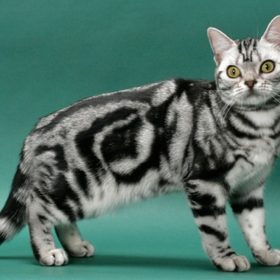 American Shorthair
American Shorthair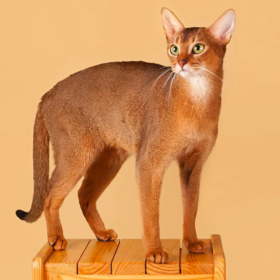 Abyssinian
Abyssinian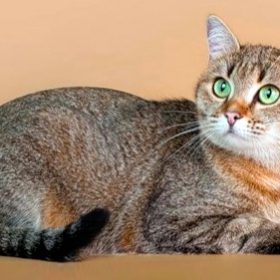 Celtic Shorthair (European Shorthair)
Celtic Shorthair (European Shorthair)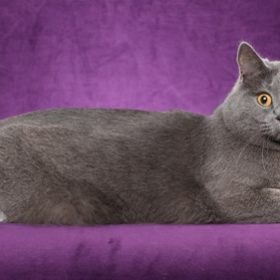 Chartreux
Chartreux Bengal Cat
Bengal Cat